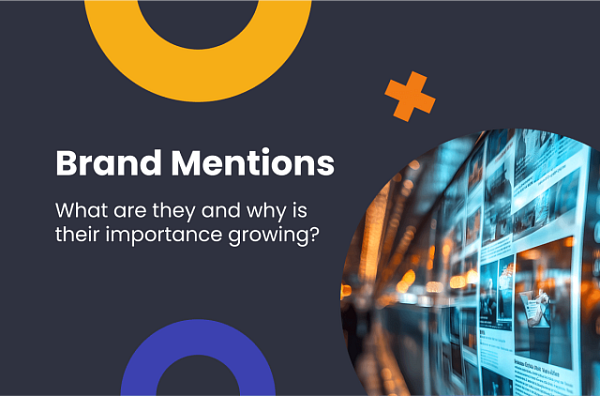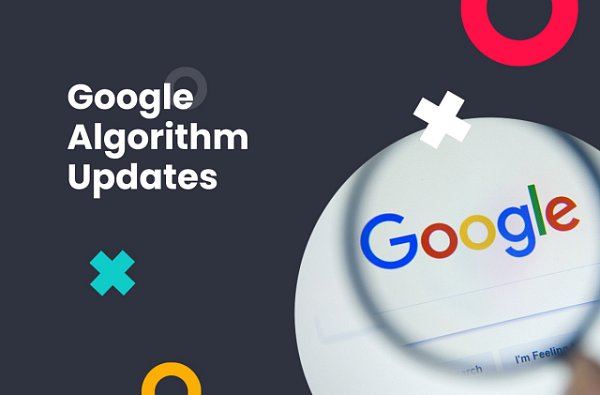(11 min. read)

Table of Contents
- Investigate user intentions and determine the content type
- Check Google search results
- Decide whether to write new content or optimise existing subpages
- Assess the risks associated with content distribution
- Find out what the marketing and sales goals are
- Optimisation and positioning
- The visual aspect is crucial for the reader
- Be sure to promote the content
- Prepare a draft before creating the content
Conclusion
Interestingly, both draft and other steps can be performed by an SEO expert as well as a copywriter, which is dependent on: the structure, work methodology, knowledge and experience. By creating content based on a well-thought-out marketing strategy, you can increase the reach, improve the conversion rate and ROI.
1. Investigate user intentions and determine the content type
When starting to create content, we should get to know the profile of the audience. Each reader has his own goals and expectations regarding the quality and type of information sought.
Awareness of the reader intentions helps in the creation of an effective content. By meeting expectations, a website generates not only a better conversion rate, but also positive behavioural signals recorded by the Google algorithm.
User expectations can be dramatically different depending on the phrases searched in Google. Compare the expectations of two users searching for two different phrases:
Phrase A: " timber-framed houses available immediately price list" - a user determined to buy, looking for a specific offer and a price list.
Phrase B: "operating costs of timber-framed houses". - user looking for educational and advisory content, considering a future purchase.
Although both phrases concern a similar topics, the expectations for Phrase A will be fulfilled by a completely different type of content than in the case of Phrase B.
Phrase A - content should include the offer, price range, photos or visualizations of at least several projects and a clear CTA (Call to Action) in the form of a featured link, phone number, form, etc.
Phrase B - a longer form of content containing the advantages of the described solution, tabular data comparing operating costs, perhaps also an infographic with pie charts or bar graphs.
Lack of clear user intent
In a situation of uncertainty about user expectations, it is worth using the organic Google search results and checking the type of content found in the top positions. Google algorithm is designed to meet user expectations, so websites at the top of the search results (at least in theory) best represent the goals of the audience.
2. Check Google search results
Regardless of the fact whether you are sure about the expectations of the audience, it is always worth verifying what type of content generates the most organic traffic in a particular thematic segment. Based on this feed, prepare a similar, yet more attractive form of content that will better meet user expectations.
3. Decide whether to write new content or optimise existing subpages
A huge mistake made by both SEO specialists and copywriters is focusing exclusively on the distribution of new content. Meanwhile, as analyses show that (here, the example from Hubspot: https://
When optimising websites that have a large amount of content, it is worth considering the use of existing resources to speed up the results and increase the effectiveness of the work.
Any decision involving time or financial outlay should be made on the basis of data, so when planning further texts, articles or offer pages, you should answer the following questions:
- Does the site contain subpages related to the topic being described?
- Do the subpages generate organic traffic through Google?
- Is the generated traffic significant?
- Are your target phrases ranked high?
- Is it possible to improve the position?
- Will broadening the scope of topics lower the quality of existing content?
Despite the fact that there are exceptions to every rule, knowing the answers to such questions may usually allow you to make the right decision about the next steps.
Why should you optimise your existing content?
In many cases, correcting, updating and optimising existing content is a smaller time investment than creating content from scratch. What is more, most often the effects of the work are visible faster. This is due to several reasons:
Google algorithm can reward a fresh dose of knowledge with better positions. After optimization, we often encounter the phenomenon of momentary jumps in positions when testing the quality of new content. Google can thus test the satisfaction of users visiting your pages.
You can keep potential behavioural signals. Even if they are average or there are not many of them. For new pages, the algorithm has no behavioural data.
This implies a principle of limited trust in new content, the value of which is generally understated for a period of a few days to a few months. I usually assume that it takes about 4 months to build the trust of a new subpage.
4. Assess the risks associated with content distribution
Both the creation of new content and the optimisation of existing pages involve a certain amount of risk.
Cannibalisation of position - when creating new content
In Google organic results for a single phrase, the algorithm places a maximum of 2 - 3 subpages belonging to a single website. The vast majority of websites can only count on one appearance.
Interestingly, Google algorithm will not choose the subpage that would be most beneficial to the website owner, but the subpage that is most beneficial to the search results.
Example:
Subpage A - well-optimised, potential to be in the top 5.
Subpage B - poorly optimised, potential to be on the page 3 of search results, but the result may better complement the Google ranking.
In this case there is a risk that instead of subpage A being in the top 5, the Google algorithm will place subpage B in the top 30, so by creating more subpages with a similar topical range, we run the risk of cannibalising the position.
Subject blurring - when optimising existing subpages
When deciding to optimise and add additional content segments, you need to keep the user experience in mind. Overly long articles can dilute the scope of the topic. Content overload can distract from the most important information.
It happens that too much text can discourage people from reading, negatively influence behavioural signals received by Google and, as a consequence, lead to the loss of earned positions.
Awareness of user expectations and competition analysis allows you to avoid potential problems and minimises the risks associated with content distribution.
5. Find out what the marketing and sales goals are
When creating content, it is important to be aware of the website owner's goals. This makes it easier to analyse the profile of the audience, the user needs and to outline the publication strategy and plan. It is especially important in the case when one of the basic traction channels of a company, blog or portal is the traffic generated by the organic results of Google.
This knowledge will help you determine the appropriate character of the content (informative, educational, offer subpage) and to choose the form of CTA matched to the purchase stage at which the recipient is located.
6. Optimisation and positioning
Being aware of the targeted phrases makes it easier to plan the optimisation. Some of the relevant information can be found in the sample draft in section 10, although some elements can be assumed in a haphazard manner:
- appearance of main keywords in the title and meta title,
- appearance of keywords in headings and content,
- appropriate density of phrases,
- phrases occurring in the "above the fold" segment (the section visible without scrolling the subpage),
- use of at least one graphic element,
- breakdown of content into relatively short paragraphs,
- use of multiple headings,
- one h1 heading,
- ... and many others.
7. The visual aspect is crucial for the reader
Even the most valuable information presented in an unattractive way can reduce the effectiveness of a subpage, so focus on the form, font, structure of headings and graphical elements.
Complex information or large data sets are often easy to understand with the help of a friendly graphic form, image, infographic or video.
8. Be sure to promote the content
Creating an article is half the battle. Content is created for the audience, so make sure to achieve the greatest possible reach. To do this, use the marketing channels available, from social media, emailing, SEO, SEM. Content promotion is broader than creation, and a 50/
9. Prepare a draft before creating the content
The task of the draft is to define the subject area, type of content, technical aspects of the content (length, headings, paragraphs), define keywords, auxiliary phrases, and other information that will facilitate the creation of effective content.
Below you will find an example of a draft for the phrase: internet marketing:
Primary phrase: “internet marketing”
Provide phrases for which the search results are similar (4 or more results repeat in the top 10) to include it in the content. This will give you a broader long tail; for the phrase "internet marketing" these will be:
web advertising, internet advertising definition, e-marketing, internet ads, online marketing, advertising on website, types of web ads, internet advertising, marketing and advertising, forms of advertising on the internet, marketing types, electronic marketing, internet advertising campaign.
The next phrases to include in your content are the words that appear most often in your competitors from the top 10:
content marketing, google AdWords, social media, internet advertising, email marketing, advertising campaigns, sponsored links, google, sites, companies, advertising, actions, seo, brands, optimisation, services, analysis, media, promotion, blog, image, communication, comments.
You cannot forget about basic good SEO practices:
- the primary phrase should appear in the title (meta title and H1),
- the key phrase should be present in the content at a density of 0.4 - 1.5 per 100 words
- the content should contain as many auxiliary phrases as possible, and preferably all of them,
- in the headers, place a few auxiliary phrases, a phrase with the approximate match and potential questions from the audience,
- include the main phrase and a few auxiliary phrases in the introduction and in the above the fold section,
- plan a table and a bulleted list within the content,
- include the primary, similar or auxiliary phrase in the alt attribute of images
Define the basic technical parameters:
Content length: 2500 - 5000 words
Number of paragraphs: 60 - 120
Number of headings: 30 - 45
Number of graphic elements: 6 - 20
Number of words in bold or strong: 40 - 150
Check what questions users are asking in the thematic area. By answering the questions, you exhaust the topic and give real value; for the phrase: “internet marketing” and related phrases, the list of questions looks like this:
which term is broader: advertising or promotion?
what is marketing?
how much does advertising on the internet cost?
how much does a sales and marketing manager earn?
how much does a marketing specialist earn?
how much does an internet marketing specialist earn?
how to make money in marketing?
how to start marketing on the web?
how to set up remarketing on google?
how to turn off ads on the internet?
how to block ads on the internet?
how to find a husband after 35 according to the rules of marketing? :-)
how to do a marketing study?
what form of advertising is the most effective?
what is the advantage of sem search engine marketing?
what advertising is the most effective?
how to start internet marketing?
what is internet marketing?
internet marketing work - what is it about?
what is the marketing mix?
dynamic remarketing - how to set it up?
Description of the content purpose
Informative blog article demonstrating the possibilities and advantages of internet marketing, encouraging to check the offer for particular services related to the field of online advertising.
Call to Action:
Conclusion
Creating attractive content requires a great deal of knowledge, the right tools, and more and more time. By paying attention to quality, you can increase the probability of success. I believe that Surfer will become an inseparable companion in the distribution of perfect content that excellently matches the expectations of the audience and the Google algorithm.
I am curious to know your thoughts on the drafts you use to create or commission content. What sort of information does your perfect draft contain? I would be grateful for any hints.




